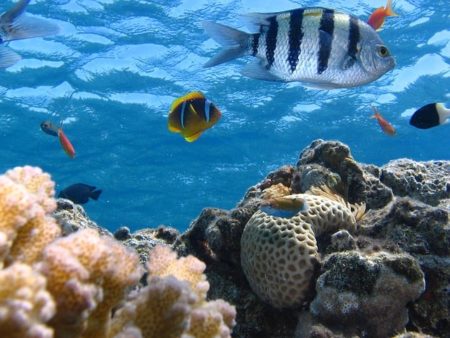February 5, 2020 – Two new studies make it that much more important for the governments of this planet to get their acts together on global warming. There are consequences to a warming atmosphere. First, heat gets transferred into the surface waters of the ocean and eventually travels through the entire water column impacting the chain of life it encounters along the way. Second, the warming atmosphere becomes more active with increasing wind conditions influencing the behaviour of ocean currents causing them to speed up.
That’s what we learned this week from the Virginia Institute of Marine Science, and a collaborative study by U.C. San Diego, the Chinese Academy of Sciences, the Pacific Marine Laboratory in Seattle, CSIRO Oceans and Atmosphere Flagship in Aspendale, Australia, and the Centre for Southern Hemisphere Oceans Research in Hobart, Australia.
Let’s first look at what the Virginia researchers have discovered. The collected data can be visited by looking at the Comparative Report Card the marine scientists have compiled. Of the 32 tide-gauge stations along the US coastline, 25 showed a clear accelerated sea-level rise in 2019. From Maine to Alaska the speed of sea-level rise showed acceleration from 2018 to 2019. The fastest sea-level rise was recorded along the Texas and Louisiana coastlines.
The phenomenon is not confined to the last two years. The Virginia data collectors noted that the accelerated rise began in 2013 and is continuing. For the east coast of the U.S., the rise is faster than on the west coast. The explanation for this is the landmass of Eastern North America is still rebounding from the last Ice Age with areas to the north of the Mid-Atlantic states rising while the Eastern Seaboard tilts downward into the ocean.
Add to this the rise in surface and increasingly deeper water temperatures contributing to the increase in ocean volume. And then take increased melting from Greenland’s ice sheets to further exacerbate stable ocean sea levels.
Consider the 40% of Americans who live and work near or on coastlines. If city, county and state governments, in the absence of any federal government action on the issue, aren’t sitting up and taking notice they may find themselves facing massive disruption to their infrastructure.
Much of the southeastern U.S. near the coast is tidewater country. Take Florida, South Carolina, the Georgia shoreline, and the Chesapeake Bay. Then you have the clear evidence of accelerated rise along the Gulf of Mexico coast. Just these two are a formula for a national sea level crisis.
Turning to our next discovery, that our ocean currents are speeding up, we have the makings of another climate catastrophe. Ocean currents speed up and slow down as part of the natural cycle that occurs in the Pacific and other bodies of water. The El Nino and La Nina events are contributors. But the latest data collected from the global Argo network is showing some significant changes from the status quo.
The researchers from China, Australia, and the United States report an emerging trend of substantial acceleration in ocean circulation, more prominent in the tropical ocean and reaching thousands of meters into the water column.
The suspected cause is the planetary intensification of surface winds from a warming atmosphere, and not associated with past naturally observed variability such as the El Nino and La Nina periodic and cyclic events.
The wind acceleration, states the study, covers 76% of the ocean. This is causing surface currents to speed up as well as impacting circulation below the surface. And faster ocean currents are leading to environmental consequences.
The research which appears in Science Advances is described as another symptom of the global warming disease that has affected the planet. The speedup is likely contributing to another noted recent phenomenon, the appearance of heat blobs in the Pacific off the North American west coast and off New Zealand responsible for large marine die-offs of fish and seabirds.
For climatologists, oceanographers, and marine biologists, the two phenomena suggest that the ocean is even more sensitive to global warming than existing climate models predicted. That’s not a good thing.
















